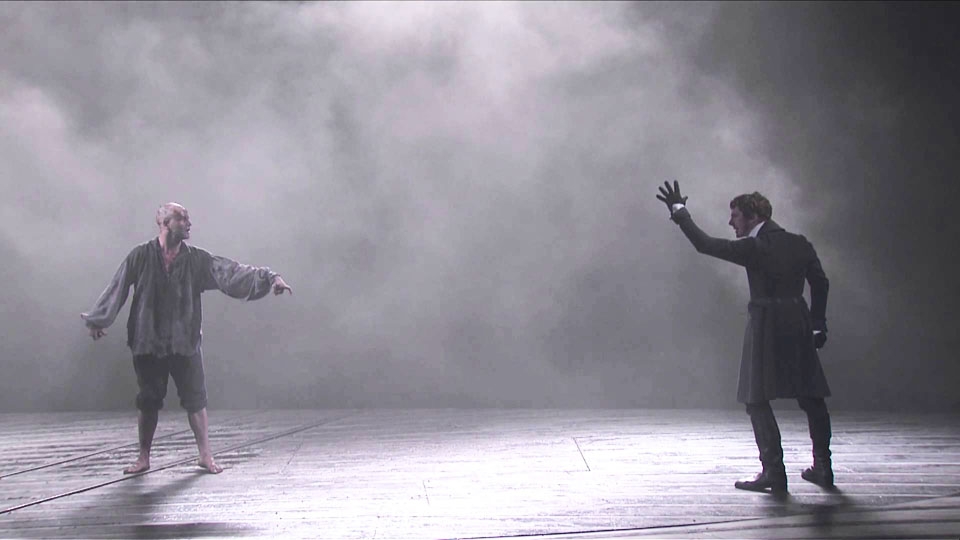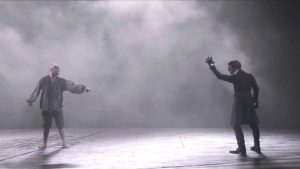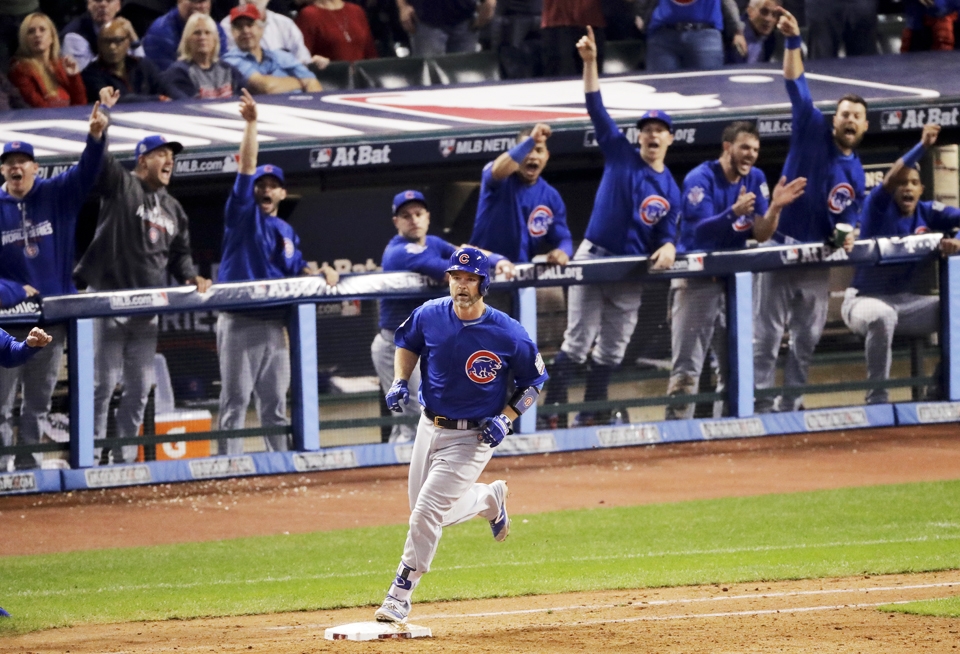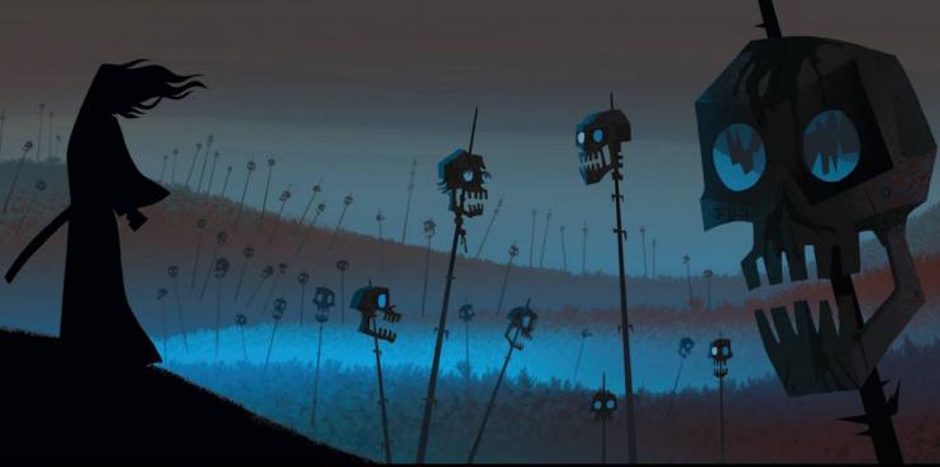

Benedict Cumberbatch (right) plays Dr. Frankenstein opposite Jonny Lee Miller (left) as the monster during the show’s stage run. The two actors would switch roles between each performance, with the movie version having Cumberbatch as the nameless creature and Miller as the titular scientist.
By Nicole Prieto | Staff Writer
Starring Benedict Cumberbatch and Jonny Lee Miller, “Frankenstein” took the proverbial stage in Pittsburgh to round out its run over Halloween weekend. The 2011 play is directed by Danny Boyle and written by Nick Dear; it was broadcast in area theaters last week as part of the National Theatre Live’s Encore Series.
The broadcast shown on Oct. 29 at SouthSide Works Cinema featured Cumberbatch as the Creature and Miller as Victor Frankenstein. The specificity is warranted, as the original live run had a unique twist: Cumberbatch and Miller would alternate roles as the Creature and Frankenstein on consecutive nights of the show, emphasizing the theme of duality from Mary Shelley’s novel.
Before the play begins, the audience is given a brief, behind-the-scenes look at interviews with the director, writer and actors. This is interspersed with scenes from the 1931 “Frankenstein” movie that has dominated popular culture renditions of the Creature. The irony, the creators state, is how the infamous film robbed Frankenstein’s Creature of his voice entirely. Where the 1931 adaptation plays upon his violent nature, his narrative in Shelley’s novel displays a loquacious being who gravitates toward John Milton’s “Paradise Lost.”
The play opens with the Creature emerging from behind a leathery screen made to resemble a freestanding womb. He collapses upon the ground. He crawls, gropes and drags himself across the stage. The overwhelming sensations of the life breathed into him take the form of blinding lights overhead, which pulse in time to his realizations about his body and of being alive. They remain key features of the production, searing like stars against the stage’s dynamic set at key points in the drama.
This, too, is our first scene with Frankenstein, who enters briefly before recoiling in disgust. He only bothers to throw a blanket over his creation as he runs offstage. The Creature is then left alone to the chaos of an industrial world drenched in alien sounds and cruel people. His immediate introduction allows us to sympathize with him first, which helps blunt the atrocities he later commits.
Boyle’s rendition gives the Creature his voice back in a unique way. He is almost a compromise between the boorish Boris Karloff version and Shelley’s original. His speech is largely true to the dialogue in Shelley’s novel, but the lines are spoken almost in farce. His words are loud and drawn-out, interspersed with actions such as leaping on chairs or clawing at the air — perhaps mocking the conventions of the Romantic and Victorian England eras. The Creature embodies, undoubtedly, Frankenstein’s monstrous, half-fulfilled experiment without sacrificing all the passion of Shelley’s wronged being.
After abandoning the Creature, Frankenstein is first truly introduced when his family creates a search party to find his younger brother, William (Hayden Downing, William Nye and Jared Richard). The boy had gone missing after a game of hide-and-seek, abducted by the Creature earlier that day.
Frankenstein’s character is a departure from the sentimental young scholar stricken by grief after his mother’s death in Shelley’s book. We do not witness his transformation into the wayward student who becomes obsessed with death. That information is instead relegated to a few feverish and harried speeches. Dear presents us with the man determined to force nature to bear its secrets to him — and who vacillates between disgust and pride in his abilities.
His fiancée, Elizabeth (Naomie Harris), is the only person who seems to humanize him for the audience with any efficacy. They regard one another with a playful, mutual respect. Her kindness and humor foil his severity; if someone like this finds Frankenstein appealing, perhaps he is not as atrocious as the audience is being led to believe.
The set itself is a technological feat, with parts of scenes rising from the floor in a circular platform and shadows expertly cast behind paper-like screens. A track runs along the center upon which a train-like device roars through, emitting sparks and noise while carrying people swinging hammers. In the scene where the Creature immerses himself in nature, real water falls onstage to imitate rain.
The play makes interesting departures from its source material, the most significant being the scenes where the Creature becomes literate through the De Lacey family. Old man De Lacey takes an active role in developing the Creature’s literacy for a year, which contrasts his self-tutelage in the novel. De Lacey, a blind scholar, takes pains to reign in the Creature’s impulsiveness. They take walks together, quoting literature and contemplating the Creature’s existence. If anything, this added sentimentality makes his separation from the De Laceys all the crueler.
The mother of science fiction had borne a creation myth with disastrous consequences, and playwright Dear avoids buying into the interpretation that her story is simply a warning against man usurping God. Rather, the production gives heavy emphasis to Frankenstein’s irresponsibility. His desire to create life stems from pride alone. His action in abandoning the person he brings into the world transforms him into the author of his own suffering. Both he and the Creature become locked in an Ouroboros of destruction as both men waste away in their mutual hatred of one another.
Boyle’s production was a sold-out success in its original run, and it remains powerful on-screen years later.






Interesting & well written review, Nicole.